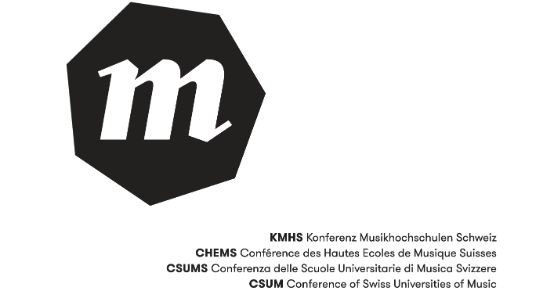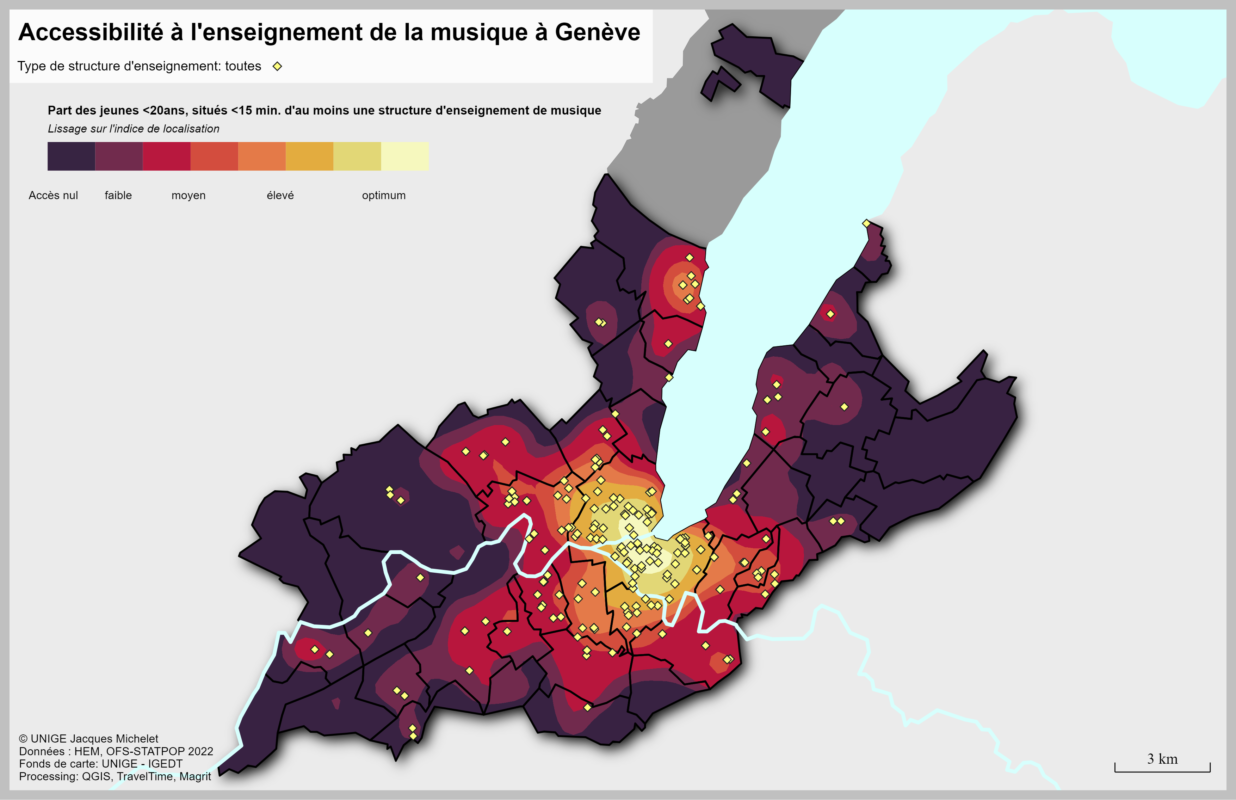Teaching jazz at Swiss HEMs

Jazz is one of the many facets of the Swiss music scene. An overview of the history and development of jazz courses at Swiss music colleges and a report on the swissjazzorama Swiss jazz archive.
Thomas Dobler - In order to explain the teaching of jazz, it is inevitable to try to define and decipher this music that fascinates us. Many attempts have been made to do this over the last hundred years. For some, jazz is "the" music of the 20th century. For others, jazz is considered "the" music of African-Americans. Still others say jazz is "the" improvised music. For some, jazz means rebellion, resistance or the fight for freedom. For others, it's music that's all about groove. We could draw up a long list of clichés, some of them almost caricatural. At the end of the day, in every case, we find ourselves in a veritable jungle of styles.
Fortunately, jazz is smart. It doesn't let itself be pigeonholed. It has developed and continues to develop. It has never been possible to trap it in dogmatic, inflexible categories. Even the disputes between traditionalists and modernists in the 50s and 60s have faded into nothingness. Nevertheless, the question "What is jazz? continues to be debated, particularly among musicians and within professional institutions. The challenge for the latter is indeed enormous.
Jazz has always been marked by a blend of influences and styles. In a way, it is the artistic fruit of cultural exchange, and therefore an expression of freedom. Jazz is nourished by the Afro-American tradition, but also by the latest trends, including electronic music. It also draws on all so-called classical music, including baroque, impressionist and expressionist music. Jazz is also strongly inspired by Afro-Cuban music, Brazilian music, West African music, Indian music and world music in general. Exchange is crucial. It therefore seems obvious that the jazz musician should be open-minded. He or she should at once enjoy a broad knowledge of tradition, and at the same time always move towards the unknown.
Miles Davis used to say that jazz isn't music. It's a state of mind! He was probably right. But how do we position ourselves as a Haute École de Musique (HEM)? You can't teach a state of mind. But we can teach music in all its diversity. So that students can develop their own personalities and mindsets through a wealth of experience.
Until the 1960s, musicians who wanted to learn to play jazz in Switzerland did so on their own. The few training courses created between the wars at the Musikakademie in Zurich (1935), the Conservatoire in Basel (1940) and the Lycée musical in Geneva (1941) had not been able to establish themselves on a lasting basis. Books on jazz were rare and records expensive. So we learned by playing with experienced colleagues, listening to and copying the few recordings available. Against this backdrop, many amateur musicians were looking for professional guidance and initiation. In response to this demand, jazz courses were set up between 1958 and 1961 in Zurich, Basel and Bern. In 1967, the Swiss Jazz School opened its doors in Berne, offering a curriculum modelled on that of Boston's Berklee College of Music. In terms of teaching, the USA had a considerable head start at the time, despite the great popularity of jazz in all parts of Europe. In French-speaking Switzerland, between 1979 and 1982, three classical conservatories - the Conservatoire de Musique de Fribourg, the Conservatoire Populaire de Musique (CPM, Geneva) and the Conservatoire de Montreux - opened jazz sections. The following years saw the creation of the École de Jazz et de Musique Actuelle (EJMA) in three French-speaking towns: Martigny in 1983, Lausanne in 1984 and Sion in 1986.
Then, in the 2000s, the Swiss jazz scene turned a corner. As part of the Bologna reform, the Universities of Music in Lausanne, Berne, Lucerne and Zurich introduced jazz courses. A few years later, the HEMs of Zurich and Lausanne also opened departments of contemporary music. At the same time, pre-professional courses were being set up throughout Switzerland. The DKSJ (Direktorenkonferenz der Schweizer jazzschulen) brings together the five jazz departments of the Swiss HEMs, as well as most of the "Pre-Colleges" and other jazz schools throughout the country. This institution is particularly valuable as a forum for exchange, and regularly carries out joint projects. All in all, it's fair to say that our national and international influence is growing and becoming increasingly important. In the space of some forty years, Switzerland has gone from an amateur scene and informal apprenticeships to professional training at tertiary level, with structured courses of study leading to federally-recognized Bachelor's and Master's degrees.
At the same time, the field of jazz has evolved enormously. Not only artistically, but also in terms of the musical environment. The digital revolution has fundamentally changed our profession and the job market. All the jazz departments at the Swiss HEMs are following this development, particularly in the fields of music informatics and studio and recording. The skills required of today's musician are multiplying rapidly. They need to be both generalists and specialists. In this context, it's not always easy to put together a coherent study plan that meets all needs. All the more so as the HEMs need to anticipate certain developments. That's why most schools have implemented individualized curricula to allow for a maximum of diversified profiles. However, with this multitude of alternatives, it is not always easy for a young musician to find his or her artistic identity. Guidance from teachers is very important, but can never replace practical experience. This is not helped by the sometimes fierce competition in the entire music sector on an international level.
An entrepreneurial spirit with a flair for innovation is a must. The very dynamic impetus currently found within the jazz departments of Swiss HEMs favors the development of this "new" model of musician. All this positive energy deserves to be heard. In this sense, let's hope for a rapid end to the pandemic and a dazzling cultural recovery!
Thomas Dobler
... is assistant director of the jazz department, head of the Bachelor jazz program and head of the Master of Interpretation Performer-Composer option at the HEMU (Haute École de Musique Vaud Valais Fribourg).
Matthias von Orelli - Das Schweizer Jazzarchiv schaut auf eine spannende Geschichte zurück. 1989 als Verein Pro Jazz Schweiz gegründet war er das Ziel, einerseits das vorhandene Bild- und Tonmaterial zu archivieren, andererseits Informationen aus der Vergangenheit und Gegenwart der Schweizer Jazzszene zu sammeln. 1996 wurde das Archiv zunächst an die Jazzschule Basel übergeben, ehe man im Jahr 2000 nach Uster umzog. In demselben Jahr fand auch die Umbenennung in swissJazzorama statt. In den folgenden Jahren wuchsen die Archivbestände immer weiter an, gleichzeitig hat die Sammlung an Bedeutung gewonnen, da sie wichtige kulturhistorische Werke der Schweizer Jazzlandschaft aufbewahrt, die sowohl für die Wissenschaft wie auch für die Öffentlichkeit aufbereitet werden. Mit dieser Entwicklung wird dem Vereinszweck Rechnung getragen: Das systematische Zusammentragen und Aufbereiten von repräsentativen Informationen und Dokumenten zu Geschichte und Gegenwart des Jazz im Allgemeinen und in der Schweiz im Speziellen.
In naher Zukunft ist die Fusion des Archivs mit der ZHdK geplant, womit swissJazzorama zur Abteilung Jazz der Musikhochschule Zürich gehören würde. Diese Überleitung hätte den Vorteil, dass das Archiv von den verschiedenen Disziplinen der ZHdK profitieren könnte, also nicht nur vom Departement Musik, sondern beispielsweise auch vom Departement Design. Mit diesem Schritt würde auch die wichtige, sinnvolle und zeitgemässe Zusammenarbeit zwischen Wissenschaft und Archiv gestärkt. Zusätzlich ergibt sich aus dieser Zusammenarbeit eine Chance für Studierende, welche sich als Helferinnen und Helfer engagieren könnten.
Bis heute gilt das swissjazzorama als die zentrale Archiv- und Informationsstelle zum Thema Jazz in der Schweiz1. Die Website ermöglicht den Zugriff auf das enorm umfangreiche Online-Archiv, die Bestände beinhalten Bild- und Tonträger, Bücher, Plakate, Fotografien, Presseartikel und Instrumente. Rund 3500 Bücher zum Thema Jazz (Biografien, Nachschlagewerke, Diskografien, thematische und musikwissenschaftliche Werke) sind aktuell einsehbar, im Fotoarchiv finden sich unter anderem historische Fotos und Aufnahmen von Musikern und Jazzpersönlichkeiten, die Schweizer Jazzszene prägten oder immer noch prägen, und im Notenarchiv lagern Handskizzen sowie Eigenkompositionen von Musikern aus der Schweizer Jazz-Szene, aber auch Noten von "Standards", die mit Randnotizen bezüglich Arrangements oder Harmonie-Modulationen versehen sind. Rund 4200 Plakate beleuchten grafisch die Schweizer Jazzszene vom Anfang des 20. Jahrhunderts bis heute.
Damit positioniert sich die Institution als wichtige Anlaufstelle für Studierende, Dozierende, Musik-wissenschaftler und Journalisten, aber ebenso für Jazzfans aller Stil-richtungen.
Note
1. Ebenfalls bedeutend ist das Archiv von Niklaus Troxler, welches die Hochschule Luzern - Musik bewirtschaftet:
> www.willisaujazzarchive.ch








